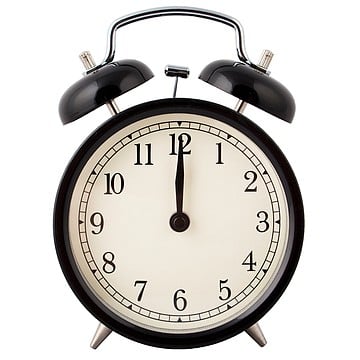 Facebook
Facebook
 X
X
 Instagram
Instagram
 TikTok
TikTok
 Youtube
Youtube
A friend of mine from the East got a parking ticket back there for parking in a zone marked "No Parking 12 p.m. to 1 p.m." Thinking this meant noon to 1 p.m., she parked there at 10 a.m. and got a ticket. Apparently, the sign meant midnight when it said 12 p.m. So, what's the deal between 12 p.m. and 12 a.m.? Is it even correct English to use these?
Rachel Slur

Has the IRS gone into the sign-writing business? It's not only confusing, it's meaningless. You'd think the people who insist that we live by all these rules would at least give us a fighting chance to understand them.
If it's 12:00 and the sun's out, it's noon; if the moon's out, it's midnight. It's not correct to designate 12:00 as either a.m. or p.m. Noon and midnight are dividing points between the hours ante meridian (before noon) and post meridian (after noon). It's that simple. Too simple for an Eastern bureaucrat, of course. Since the U.S. seems unwilling to adopt the eminently clear 24 hours clock for everyday time-telling, it seems even more important to be accurate about what we call 12:00. San Diego's official signmakers have the good sense to use the correct noon and midnight designations.
But we do have our own local parking-sign peculiarities. How about "No parking, except Saturdays, Sundays, and certain holidays"? Or "No parking, here to corner" and "No parking, corner to here"? To save you some guessing and probably a ticket, the official "certain holidays" are New Year's, Memorial, Veterans', and Columbus days; Washington's birthday; the 4th of July; Thanksgiving; and Christmas. And when you get into that "here to corner" bind, always read the signs in the direction of traffic flow on that side of the street. "Here to corner" means from the location of the sign to the next corner you reach going in the direction of the flow of traffic. If you're standing at the sign facing the same direction as the traffic flow, "corner to here" means from the first corner behind you to the location of the sign. Maybe the easiest rule of thumb, though, is to assume that any space at a curb not already occupied is probably an illegal parking space. Seems to work that way for me.

A friend of mine from the East got a parking ticket back there for parking in a zone marked "No Parking 12 p.m. to 1 p.m." Thinking this meant noon to 1 p.m., she parked there at 10 a.m. and got a ticket. Apparently, the sign meant midnight when it said 12 p.m. So, what's the deal between 12 p.m. and 12 a.m.? Is it even correct English to use these?
Rachel Slur

Has the IRS gone into the sign-writing business? It's not only confusing, it's meaningless. You'd think the people who insist that we live by all these rules would at least give us a fighting chance to understand them.
If it's 12:00 and the sun's out, it's noon; if the moon's out, it's midnight. It's not correct to designate 12:00 as either a.m. or p.m. Noon and midnight are dividing points between the hours ante meridian (before noon) and post meridian (after noon). It's that simple. Too simple for an Eastern bureaucrat, of course. Since the U.S. seems unwilling to adopt the eminently clear 24 hours clock for everyday time-telling, it seems even more important to be accurate about what we call 12:00. San Diego's official signmakers have the good sense to use the correct noon and midnight designations.
But we do have our own local parking-sign peculiarities. How about "No parking, except Saturdays, Sundays, and certain holidays"? Or "No parking, here to corner" and "No parking, corner to here"? To save you some guessing and probably a ticket, the official "certain holidays" are New Year's, Memorial, Veterans', and Columbus days; Washington's birthday; the 4th of July; Thanksgiving; and Christmas. And when you get into that "here to corner" bind, always read the signs in the direction of traffic flow on that side of the street. "Here to corner" means from the location of the sign to the next corner you reach going in the direction of the flow of traffic. If you're standing at the sign facing the same direction as the traffic flow, "corner to here" means from the first corner behind you to the location of the sign. Maybe the easiest rule of thumb, though, is to assume that any space at a curb not already occupied is probably an illegal parking space. Seems to work that way for me.
Comments